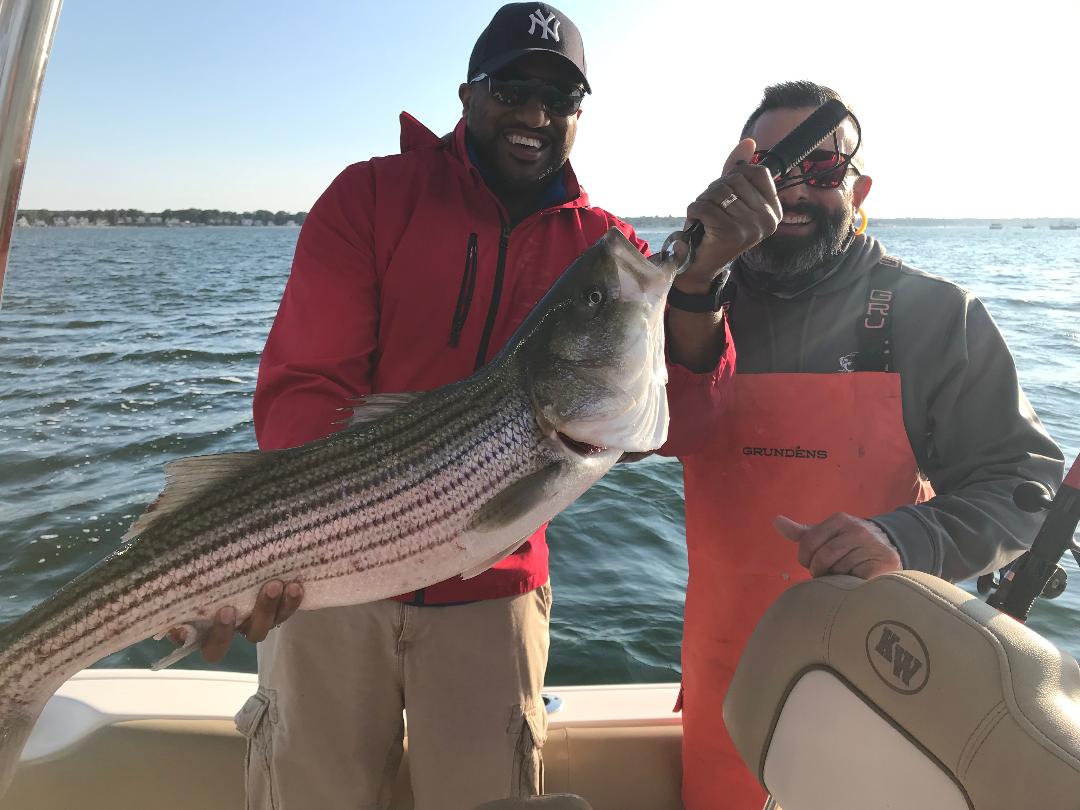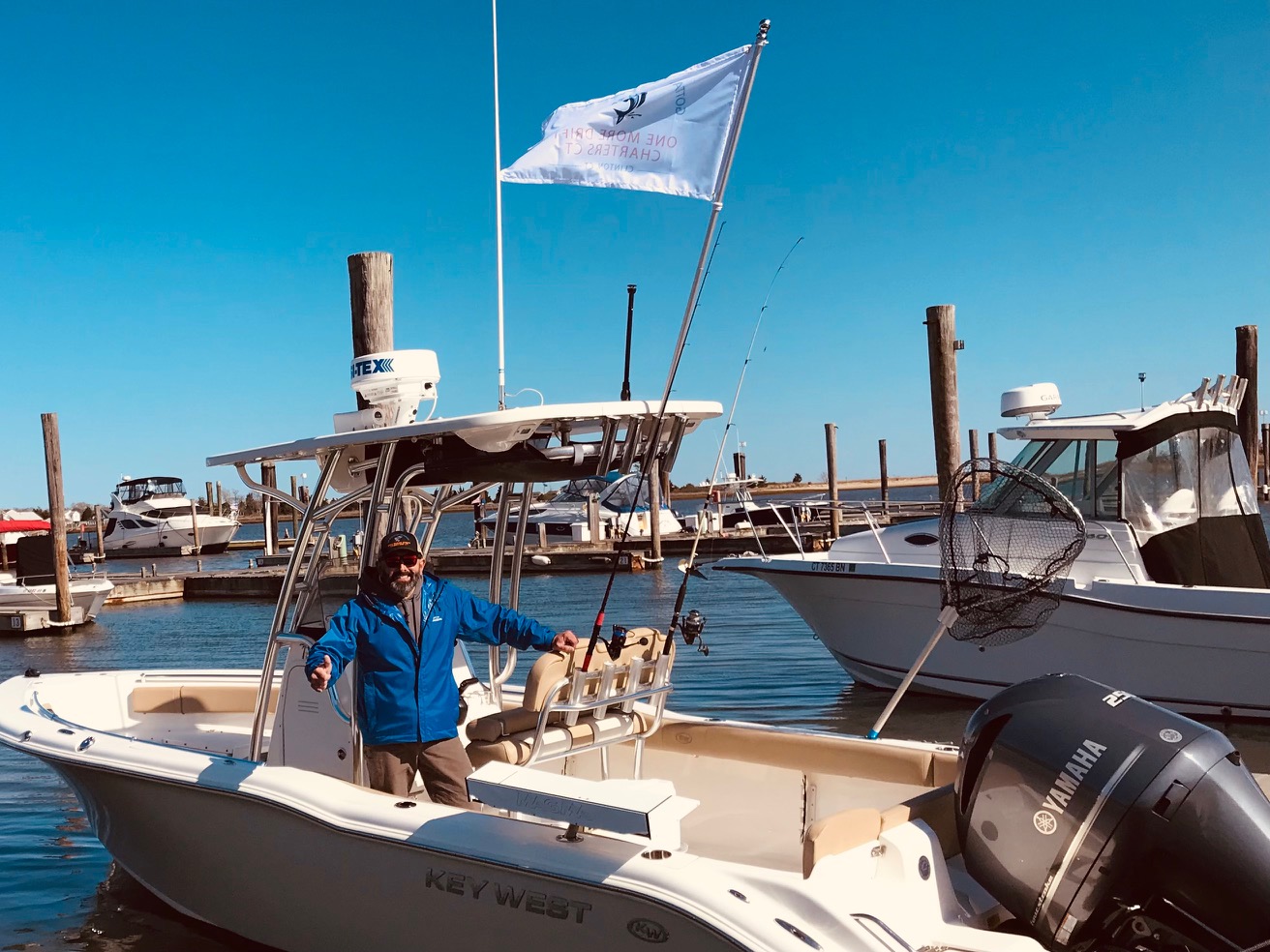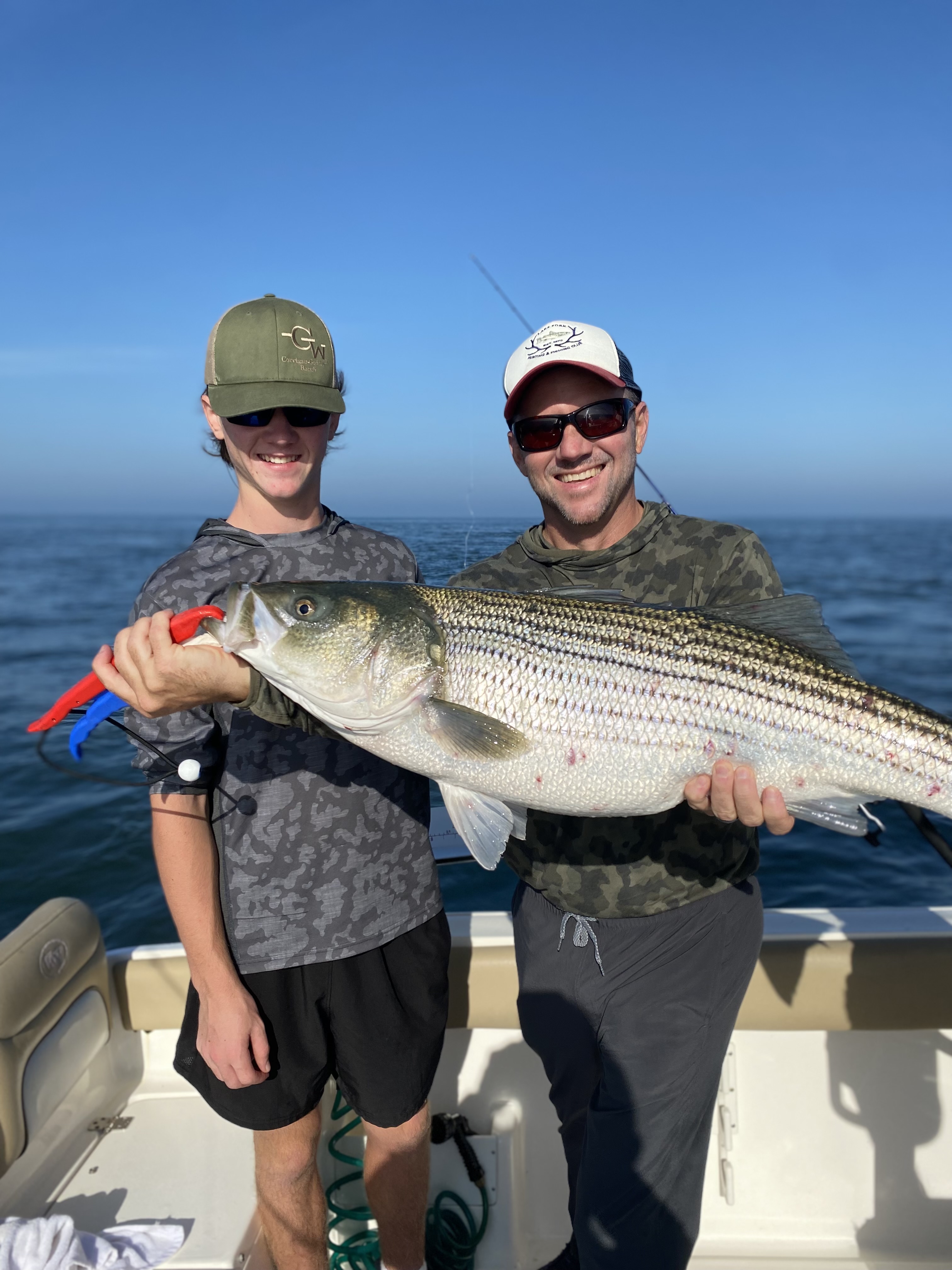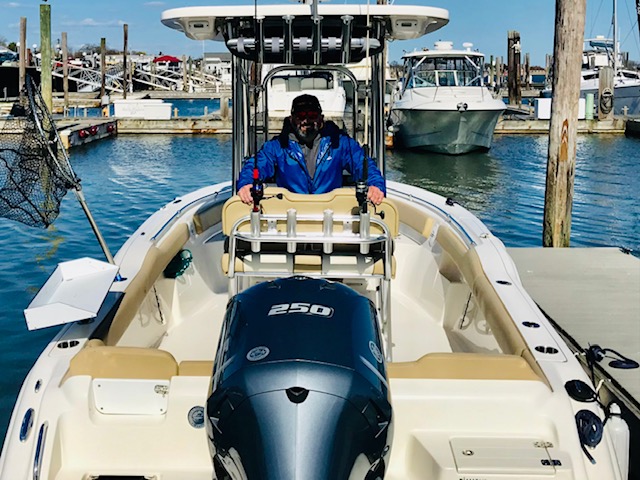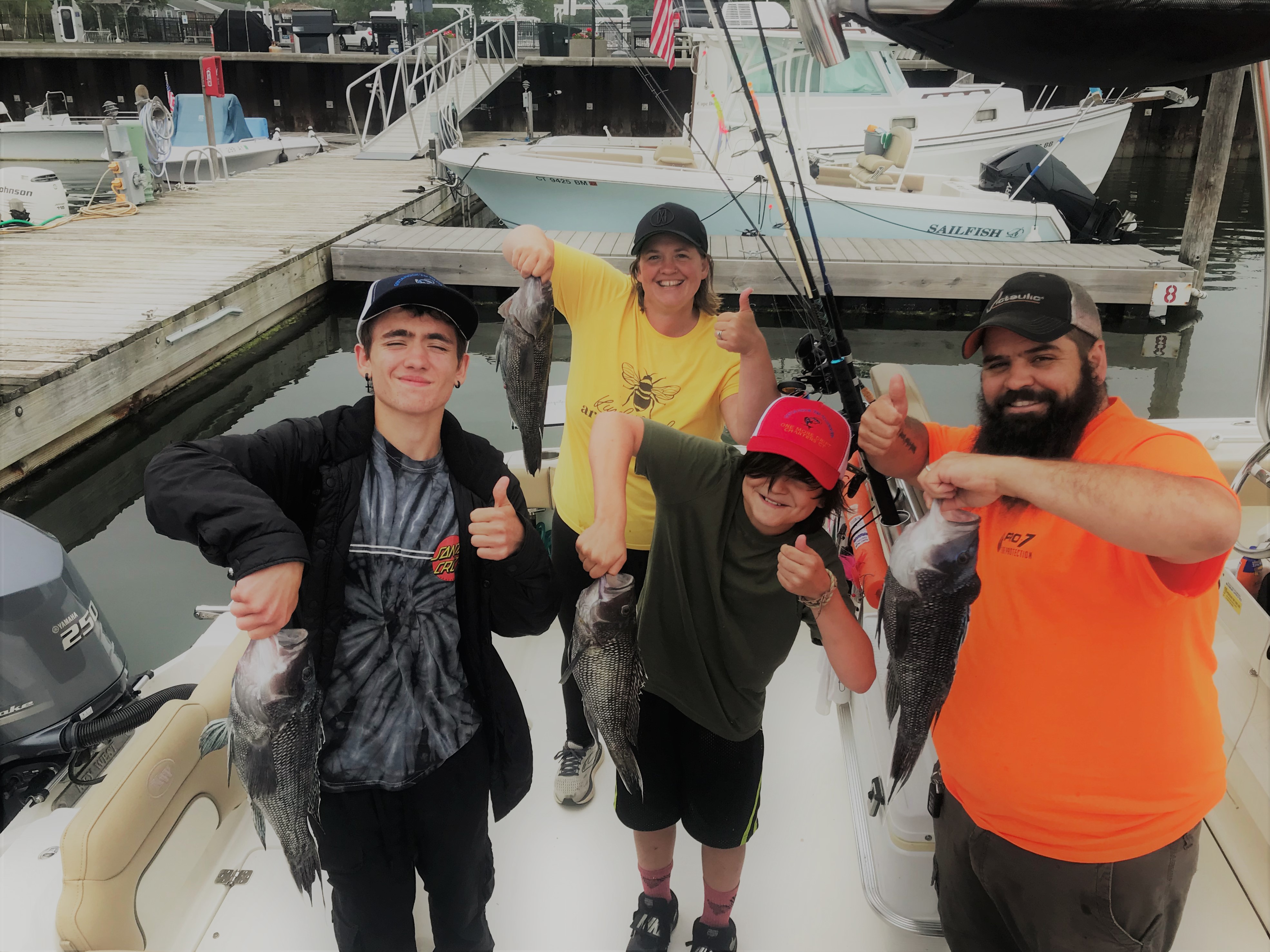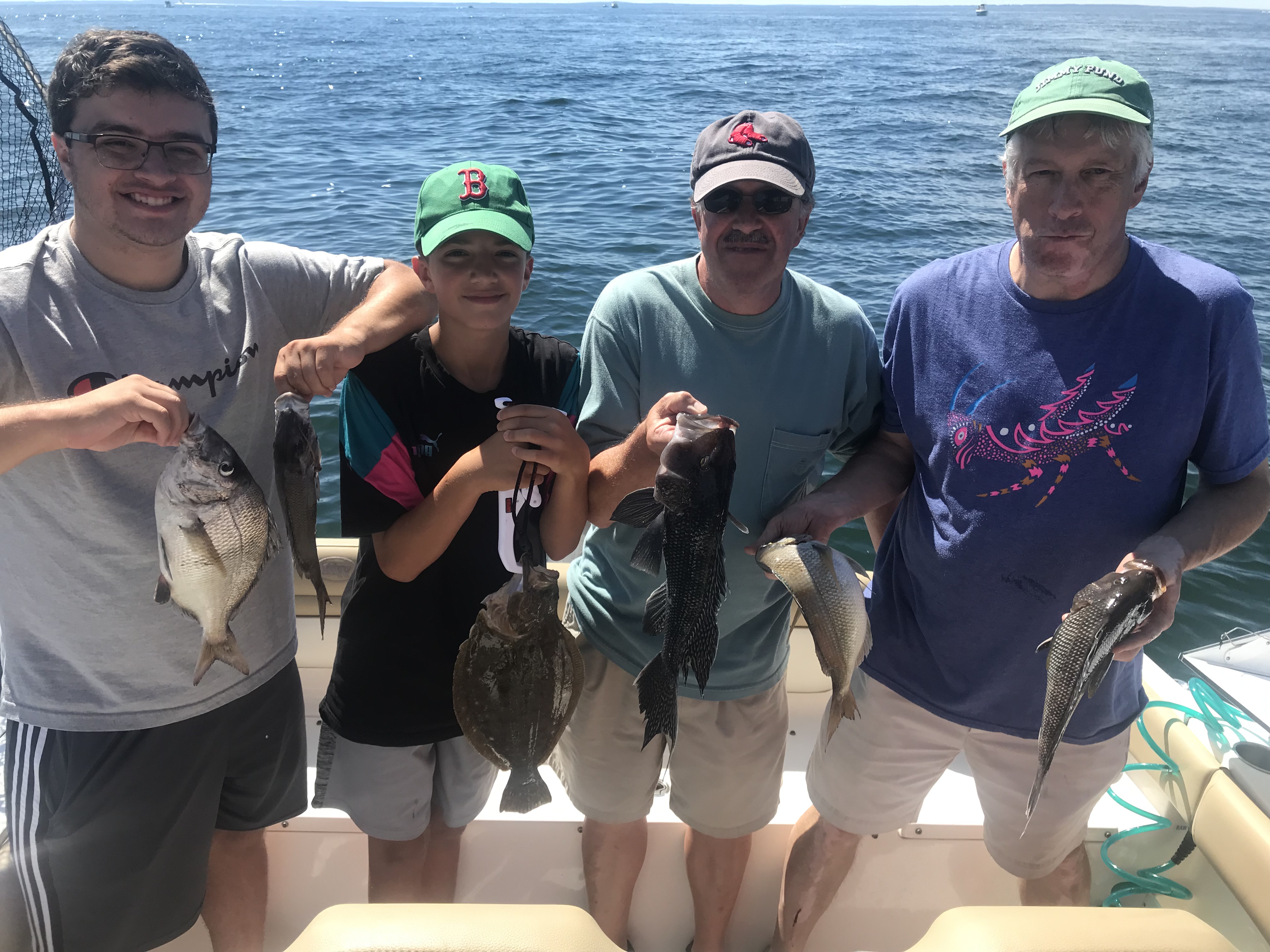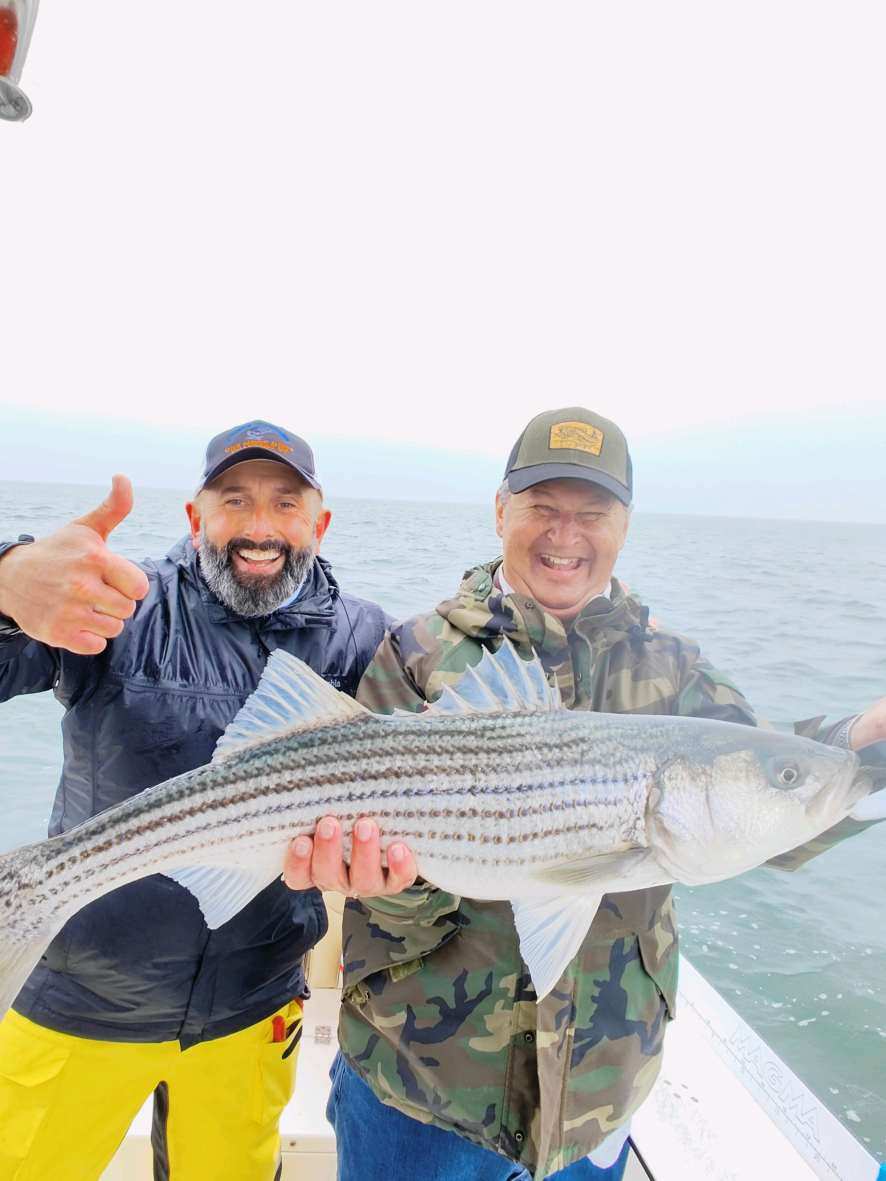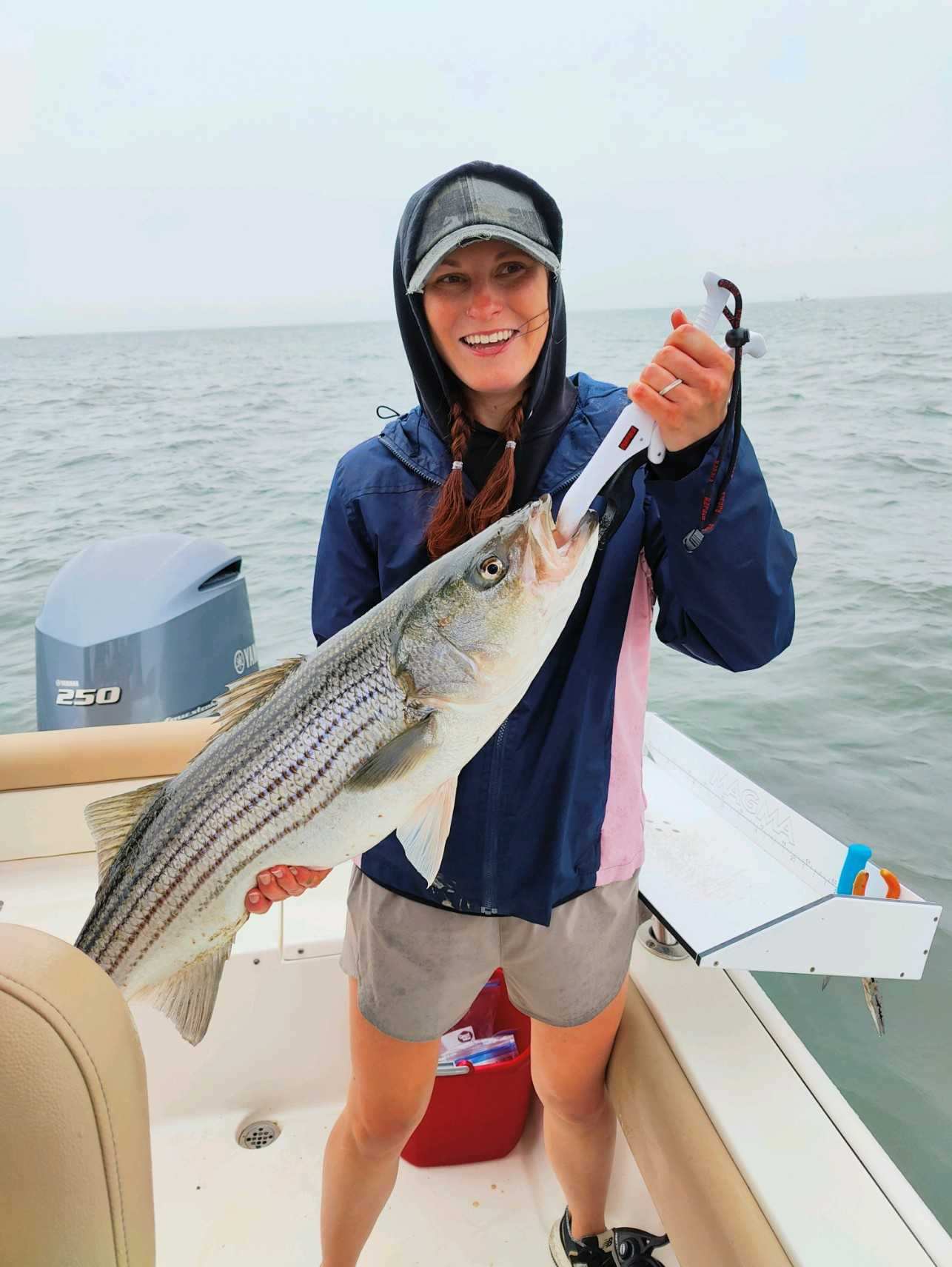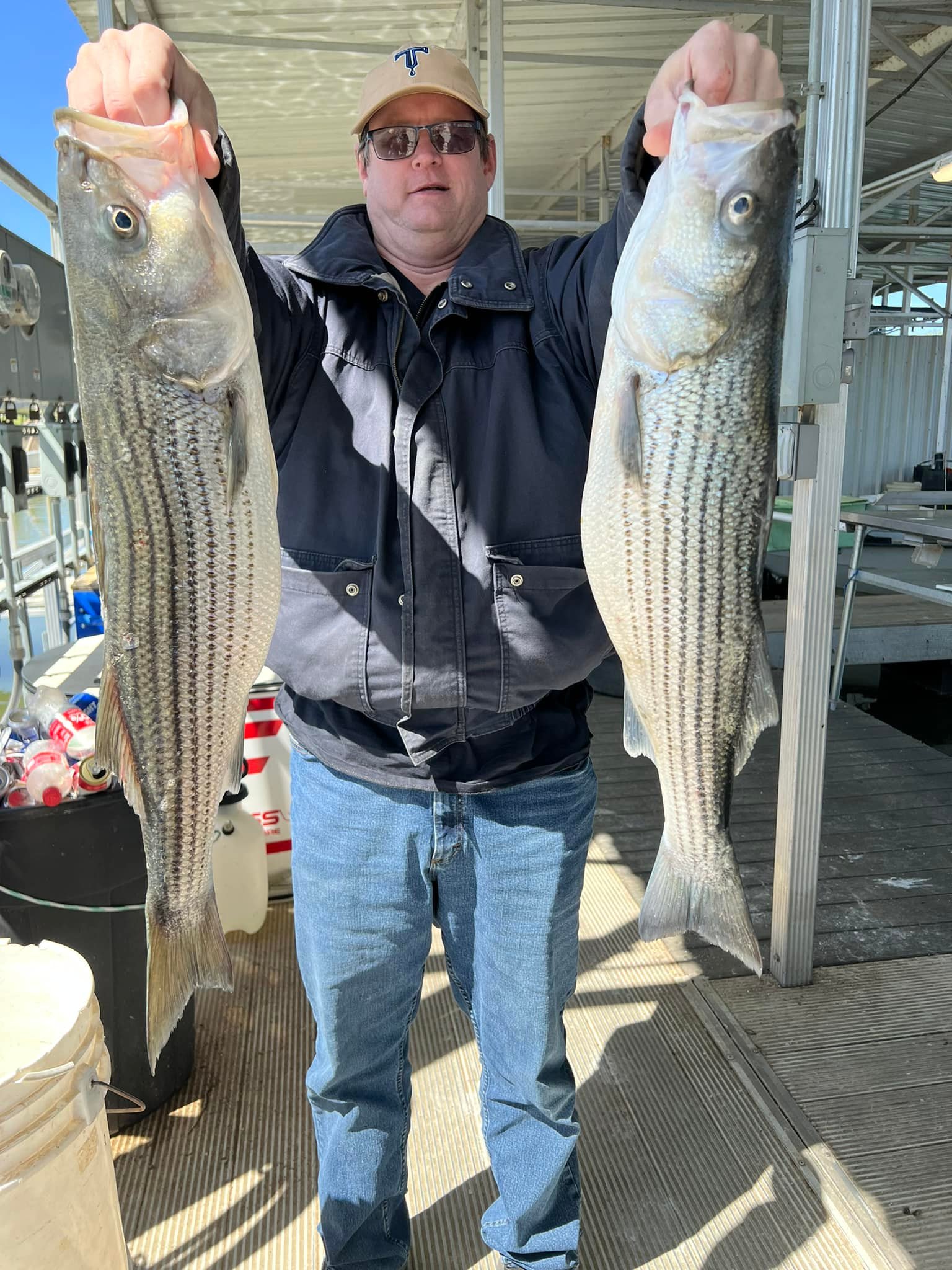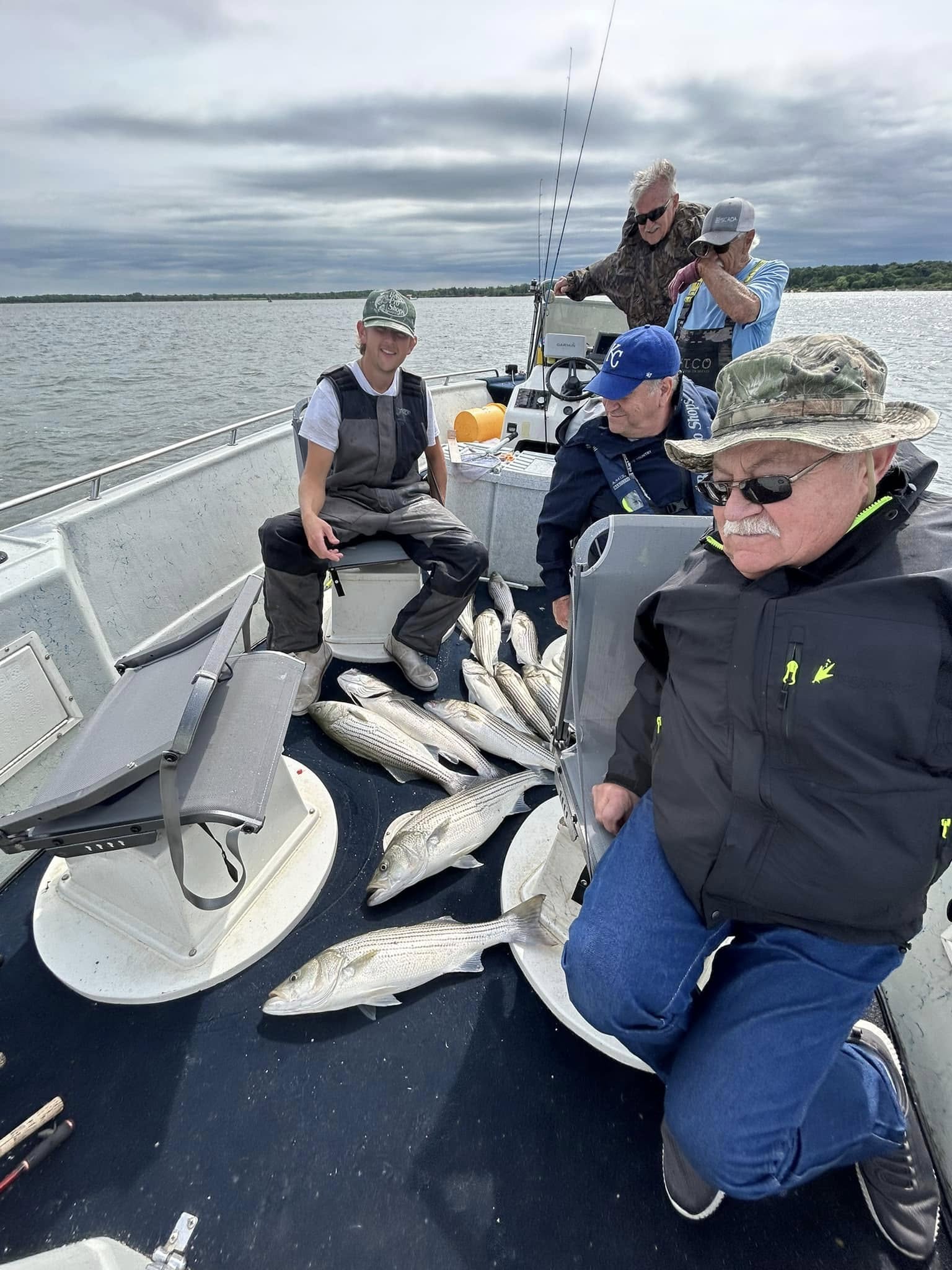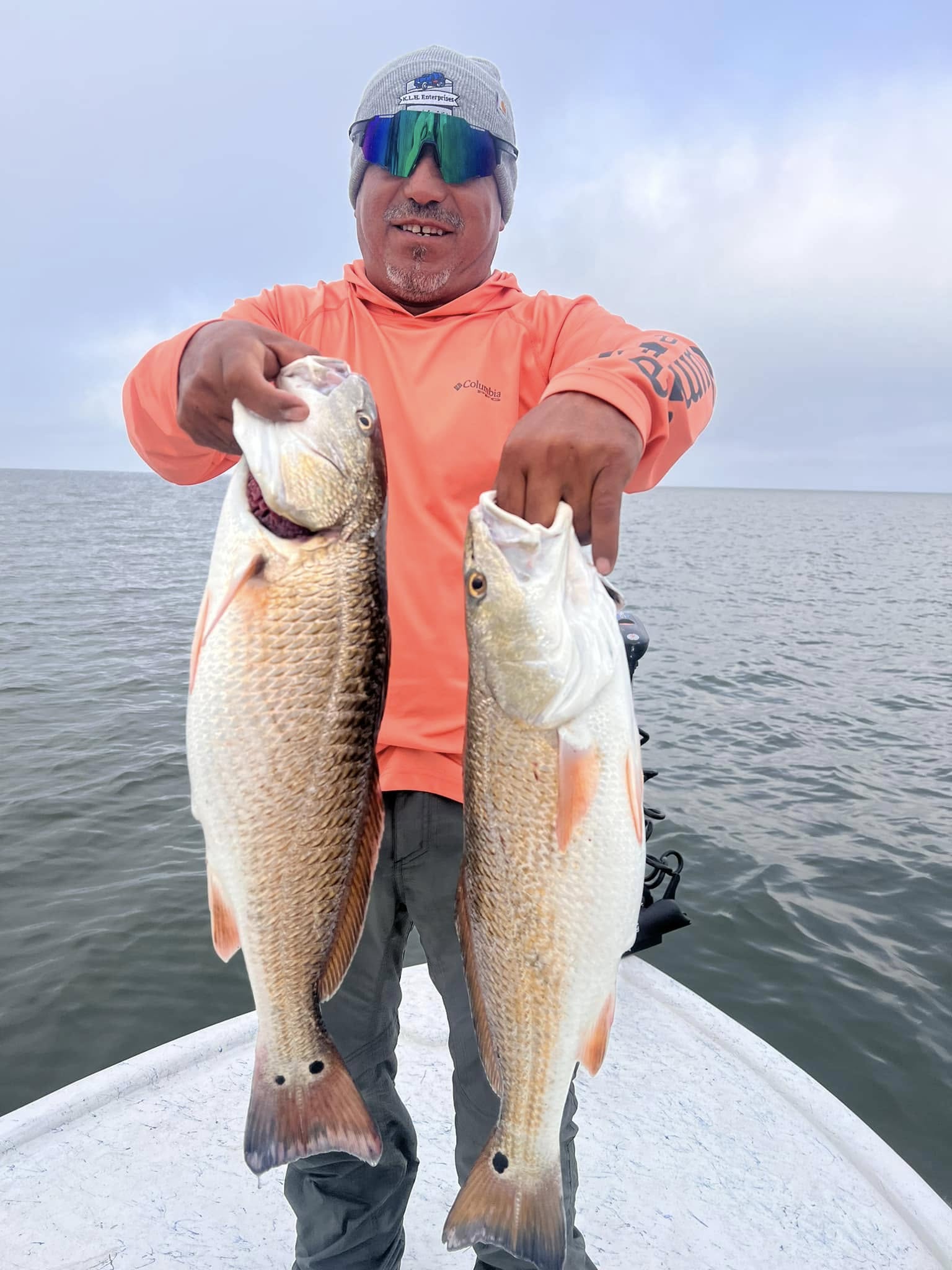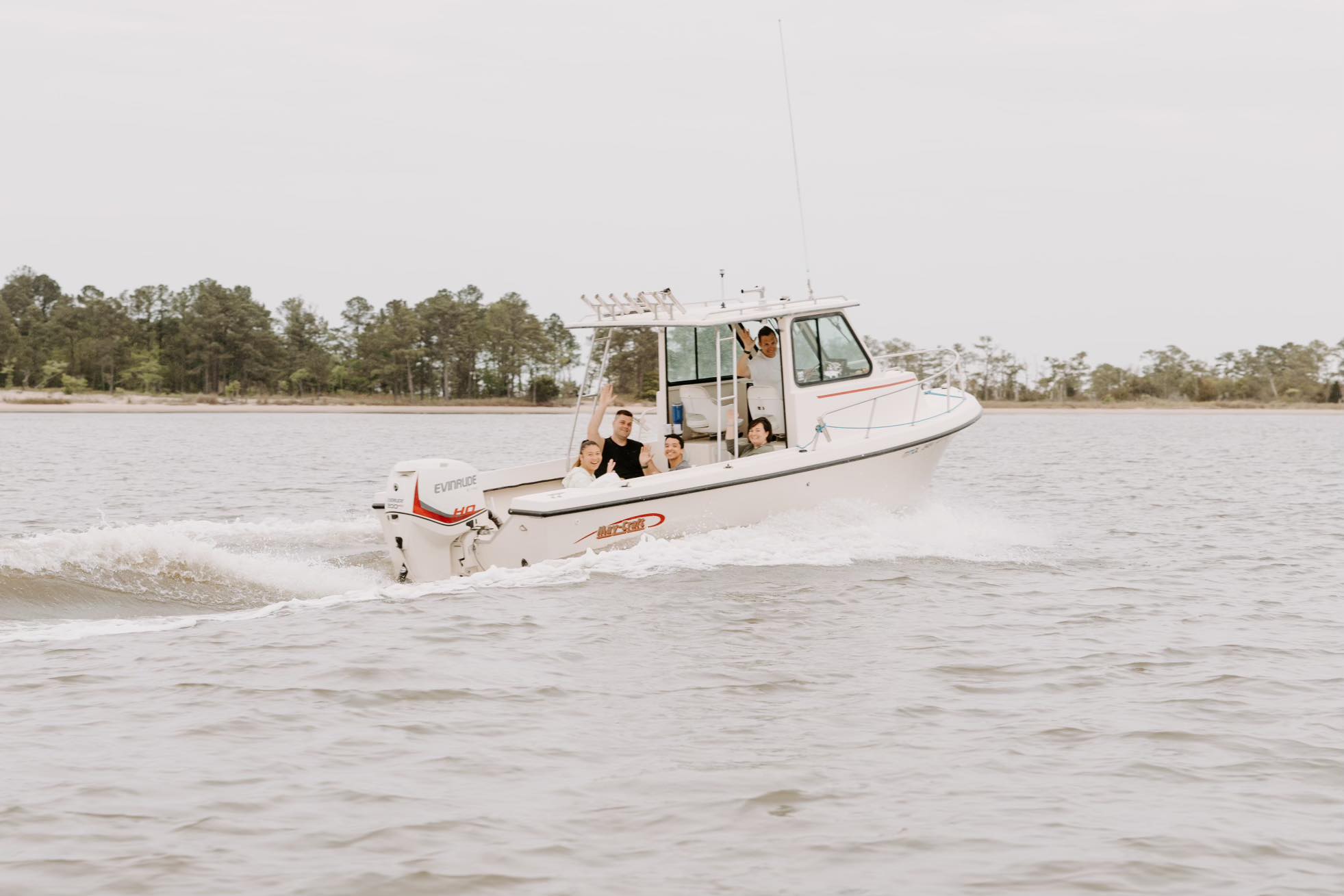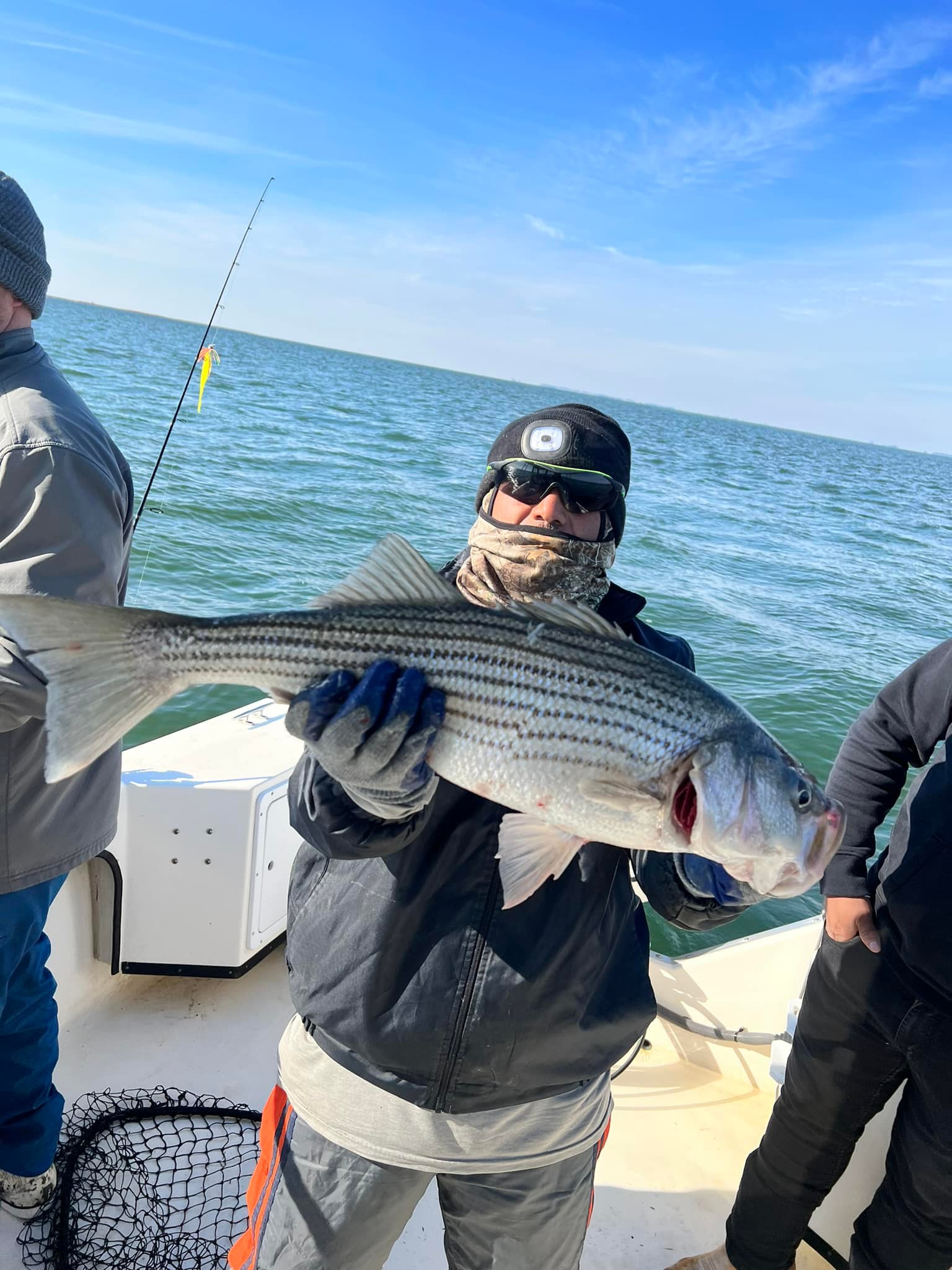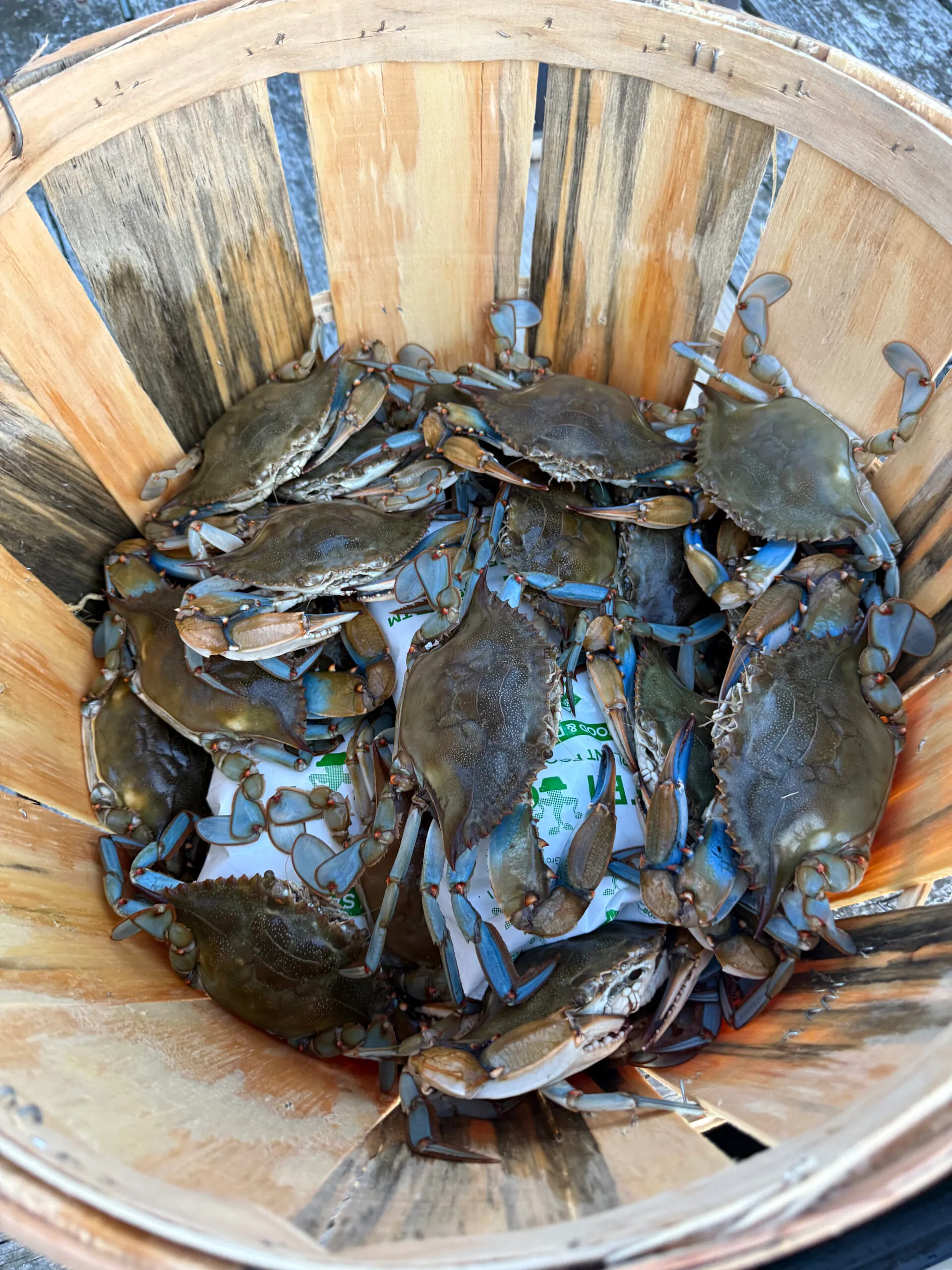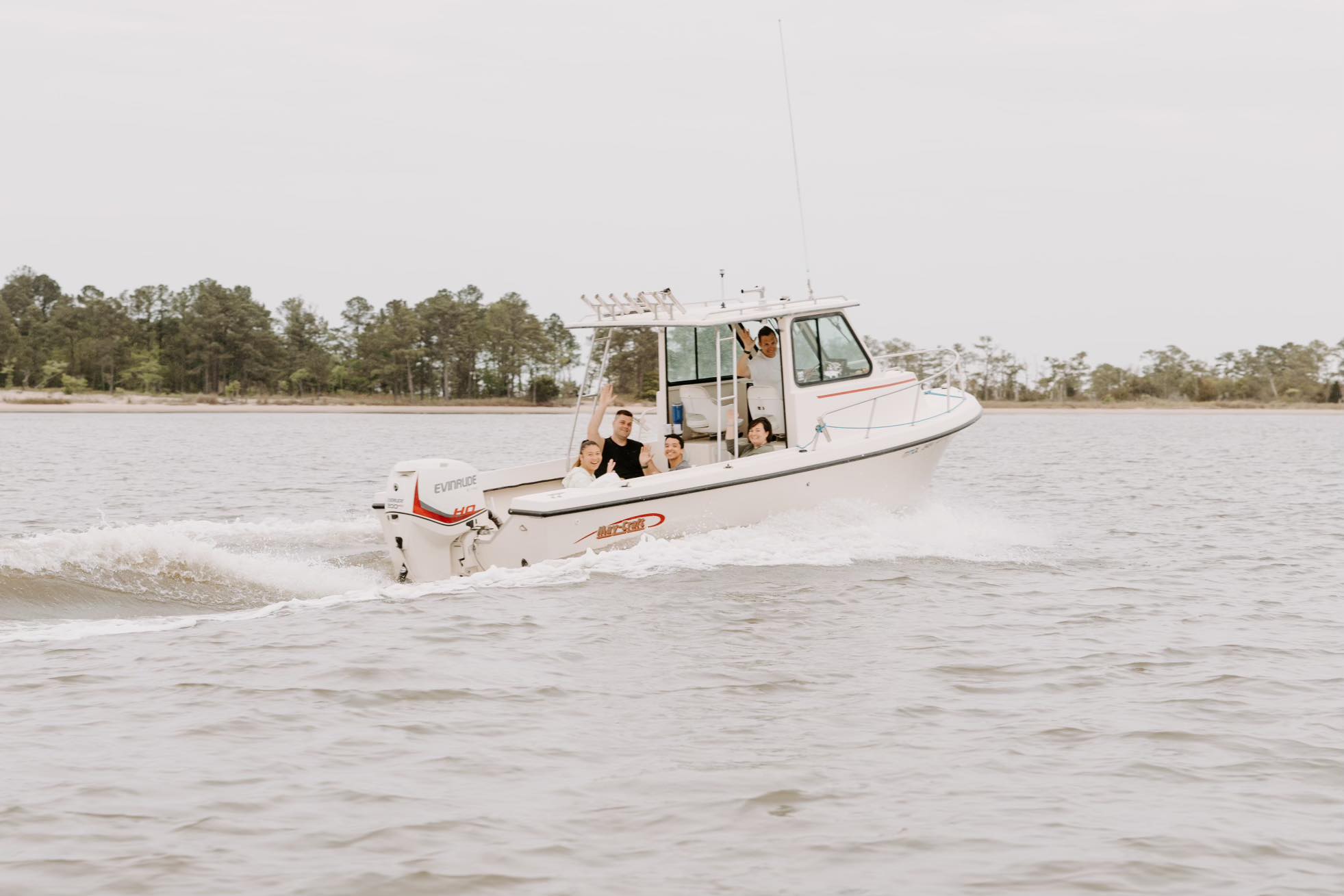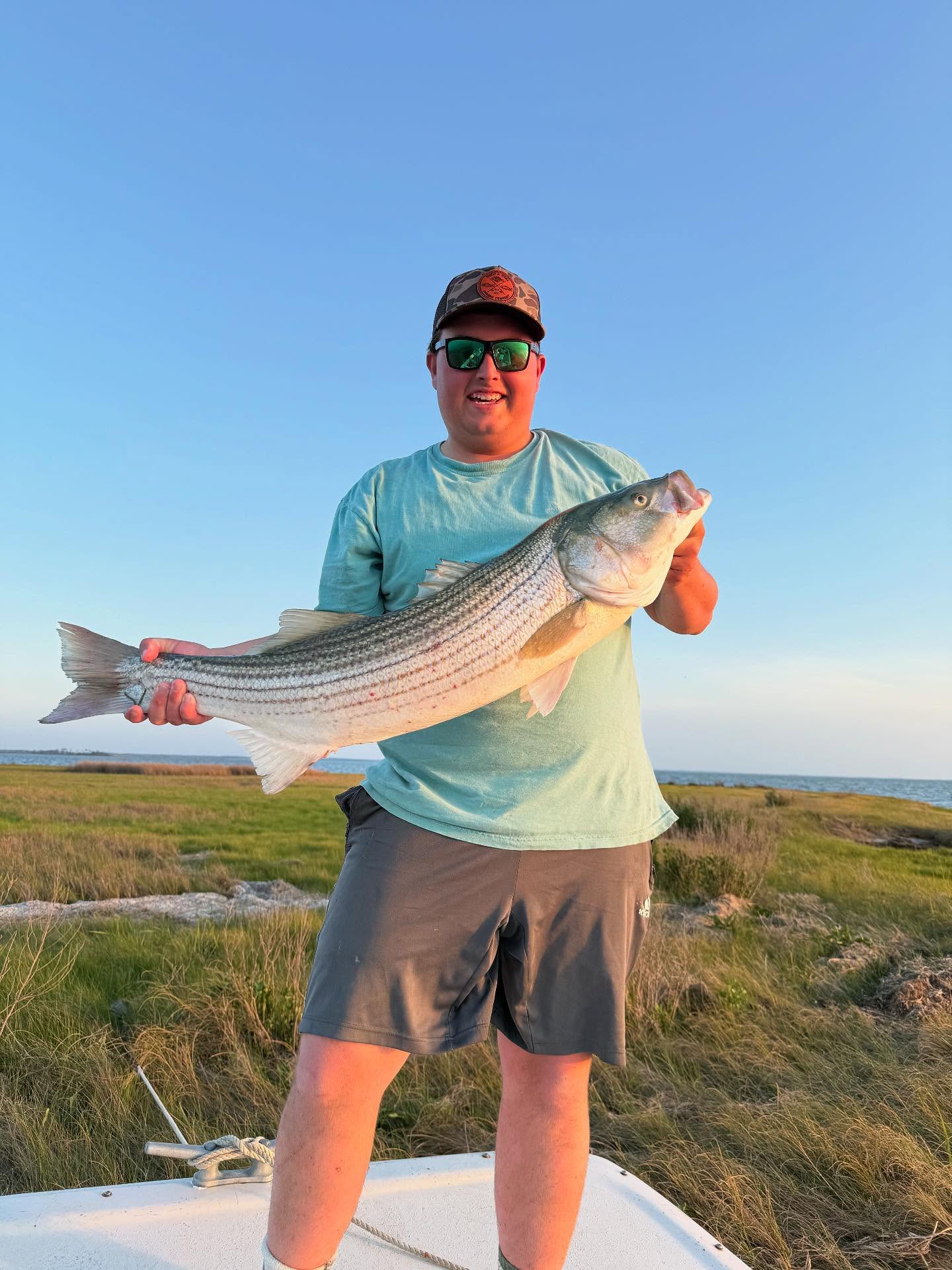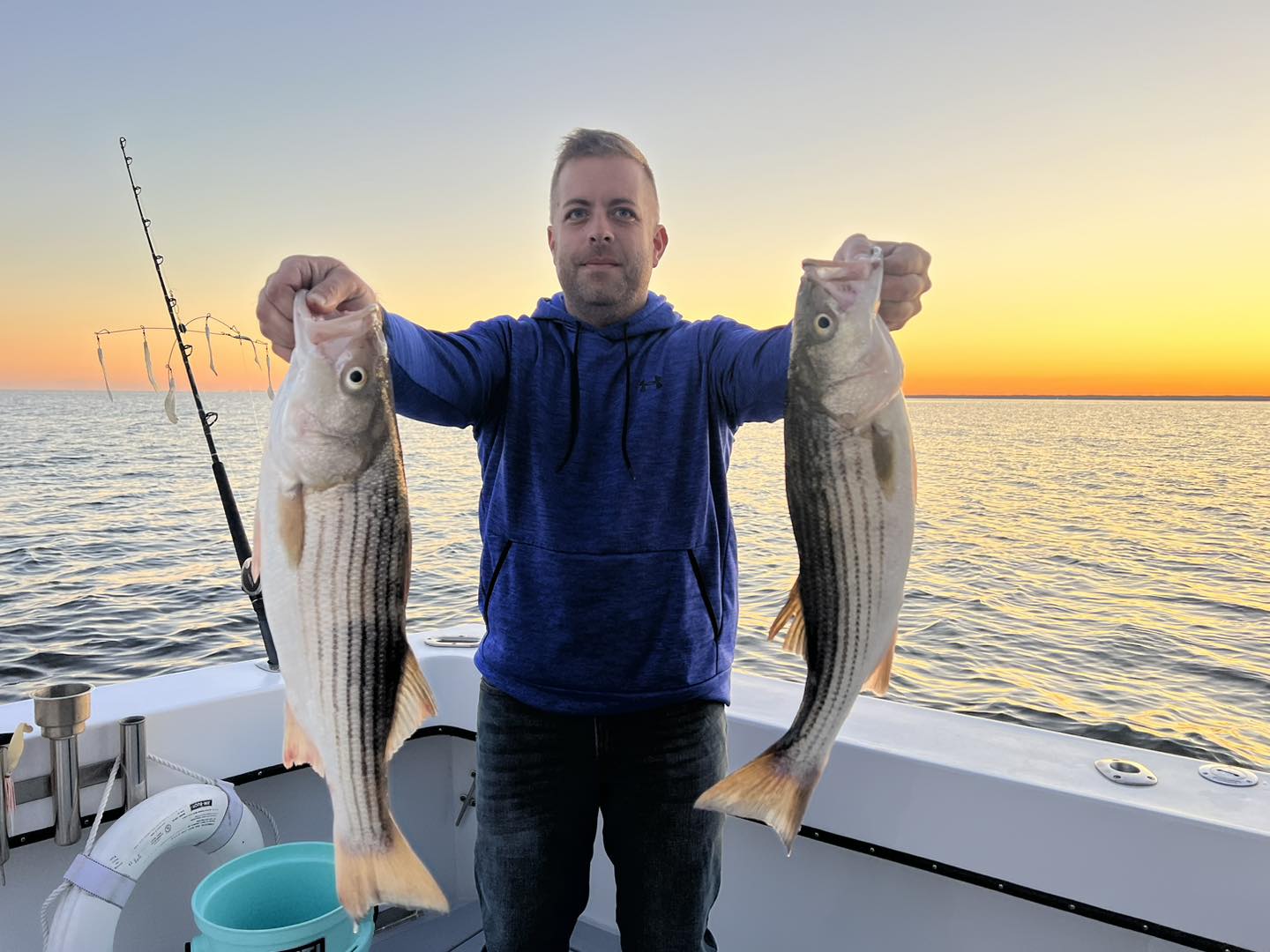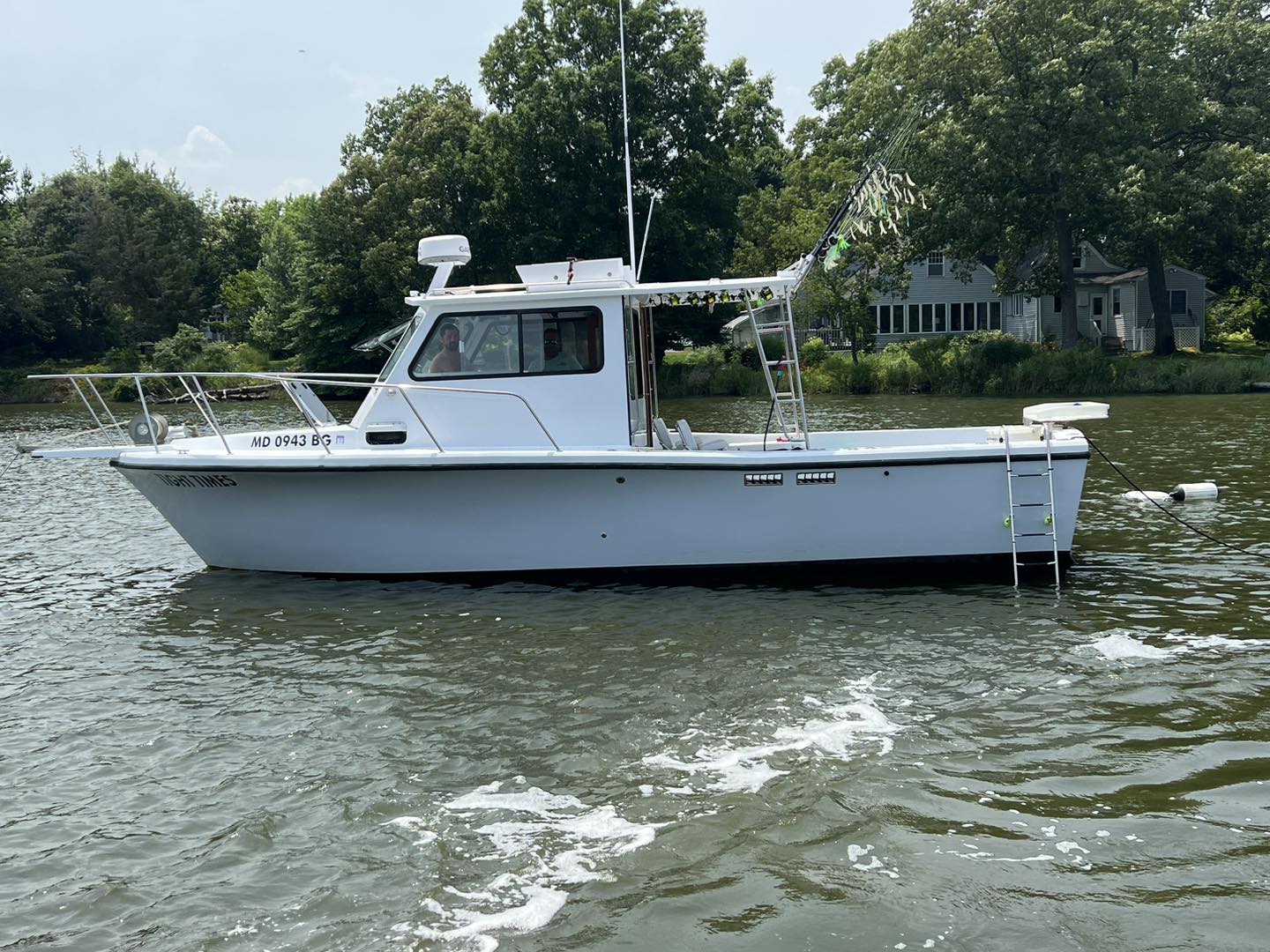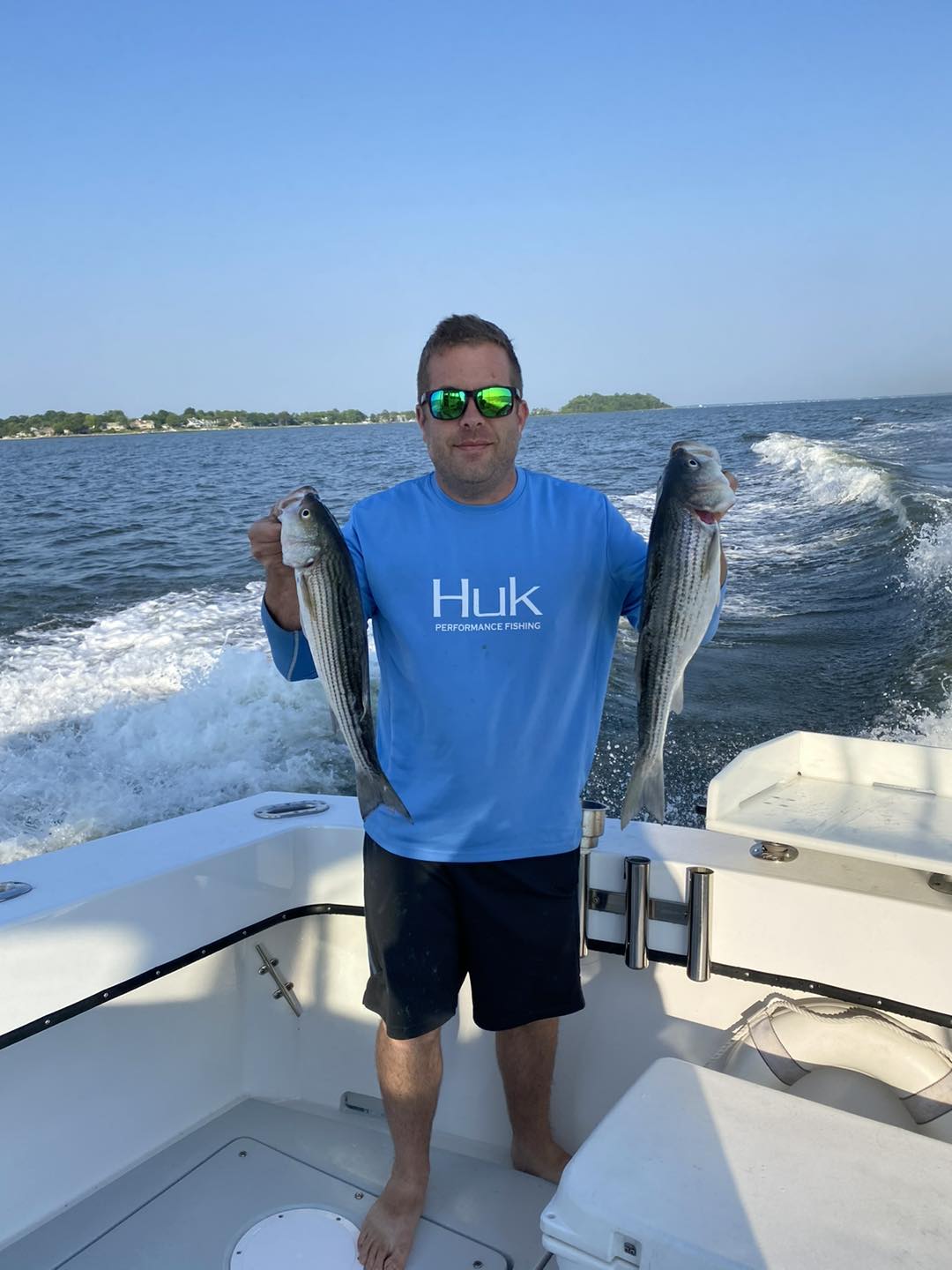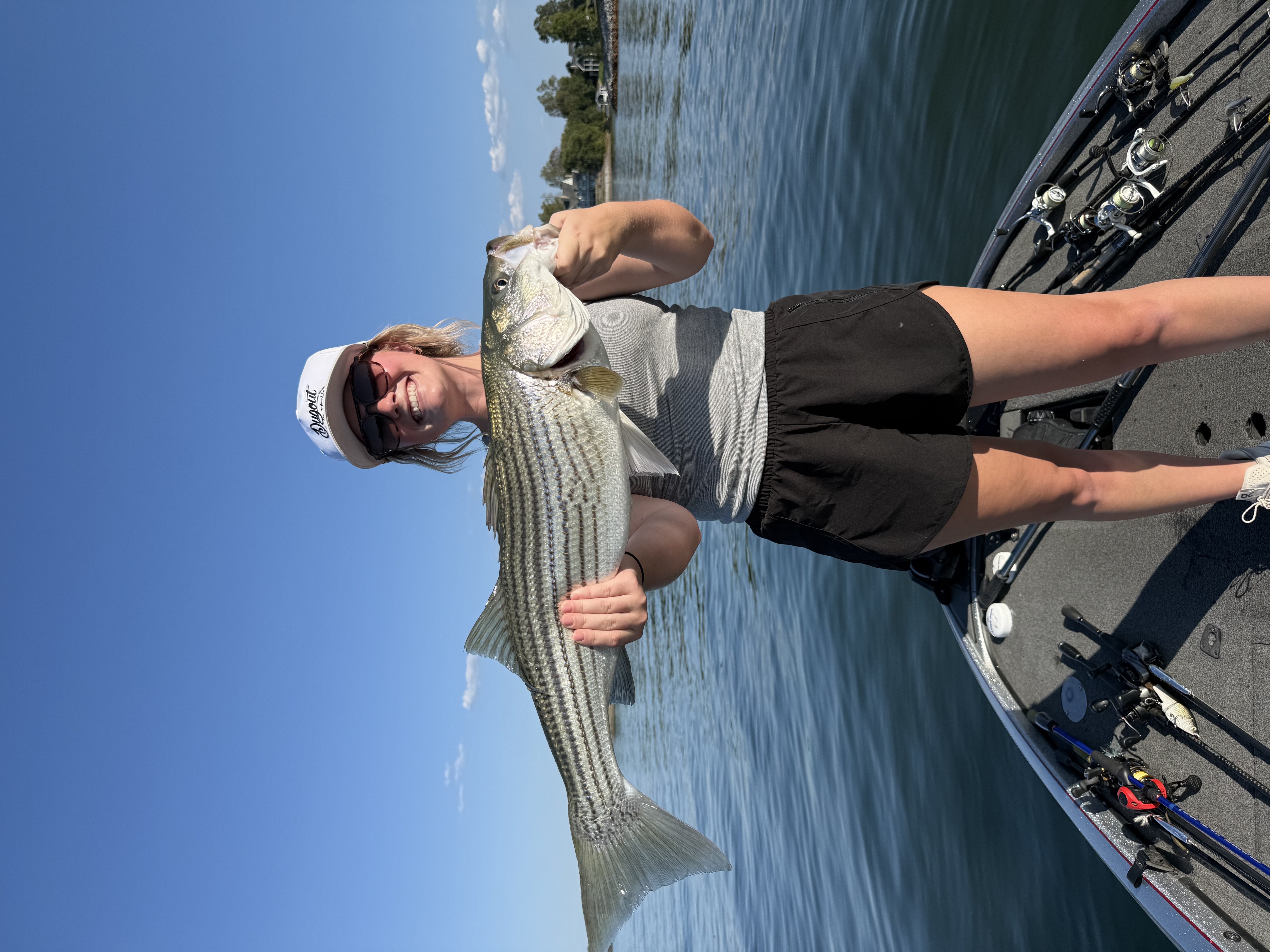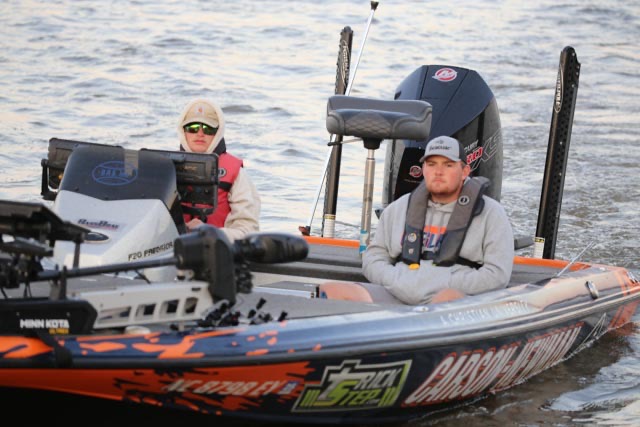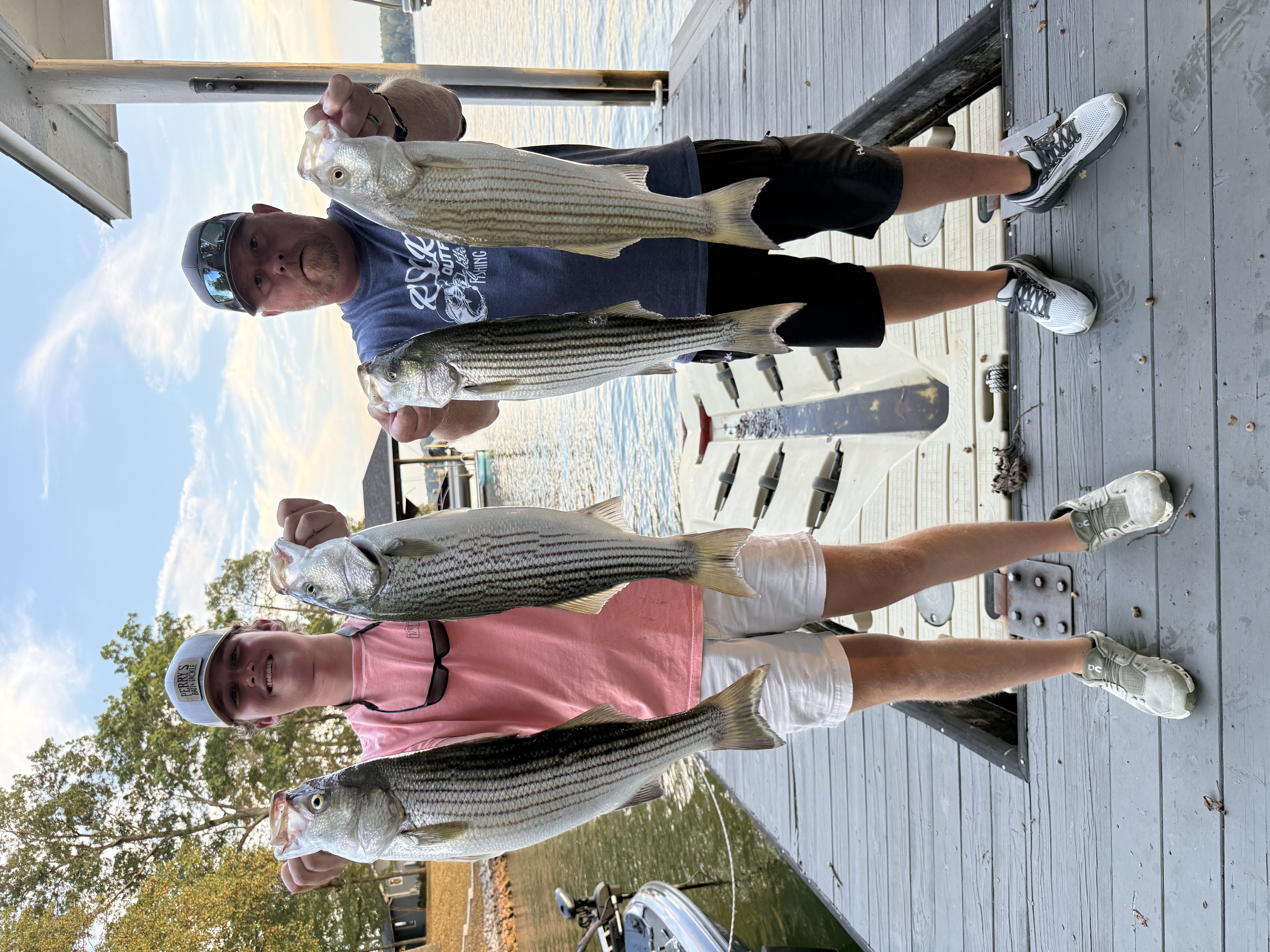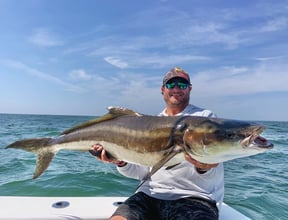Inshore, Nearshore Fishing in Clinton
5HR After Work Special (3pm-8pm)
Inshore, Nearshore Fishing in Clinton
5HR Trip AM Inshore Bass
Inshore, Nearshore Fishing in Clinton
3hr PM Trip Quick Fun Action
Inshore, Nearshore Fishing in Clinton
5HR Trip PM Bottom/ Reef
Striper Fishing
Inshore, Flats Fishing in Nanticoke
4-6 Hour Inshore Trip
Inshore, Flats, Eco Tour in Nanticoke
Crabbing And Casting Adventure!
Inshore, Nearshore, Flats in Chincoteague
Chincoteage Trips
6 Hour Inshore Trip
Stripers On Badin
We started Captain Experiences to make it easy to book fishing and hunting guides around the world. With over 2,000 Damn Good Guides, our platform makes finding and booking a trip seamless. Head here to check out our trips.
Striped Bass Fishing
Striped bass, also known as rockfish, are one of the most popular game fish in the United States. These bass can grow huge and challenge anglers, making them fun to catch. Properly prepared filets of striped bass are light, flaky, and delicious white meat which adds to their popularity.
What’s a Striped Bass or Rockfish?
Striped bass are an anadromous fish with a streamlined, silver body that is marked with longitudinal stripes that start at their gills and run to the base of their tail. As an anadromous fish, striped bass can live in freshwater or saltwater similar to rainbow trout, which are called steelhead when they travel to saltwater. The average size of a striped bass is 10 to 30 pounds and 20 to 35 inches long, but they can grow much bigger over the course of their 30 year lifespan.
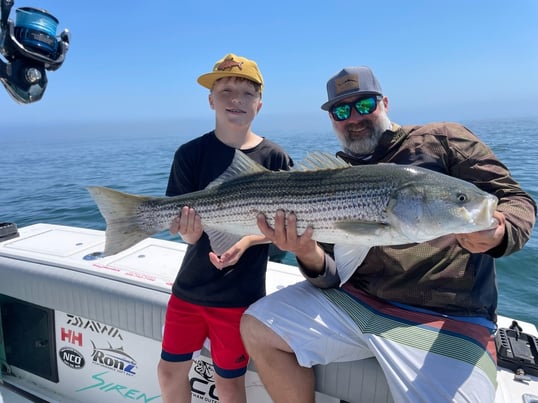
Where are Striped Bass Found?
Striper are found on the Atlantic Coast, from Nova Scotia to Florida, but are most popular north of the Carolinas. These fish live their entire lives in the ocean and only enter the freshwater rivers to spawn. Striper have been introduced to the Pacific Coast as well and can now be found from Canada to Mexico. In freshwater, they stretch from Canada to the Mississippi, as well as from coast to coast in various lakes and reservoirs where they have been introduced.
Within these areas, they thrive in water that is 55 to 68 degrees. Very warm or very cold water is not preferred, however they will go into warmer water to feed, and spend more time in cooler water where there is more oxygen.
What's the biggest Striped Bass ever caught?
On August 4th, 2011, Gregory Myerson landed a 81.88 pound, 54 inch striped bass near the Outer Southwest Reef off the coast of Westbrook, Connecticut. He fought the fish for 20 minutes after hooking it with a drifted live eel. This catch gave him the bragging rights of having both the All-Tackle Record as well as the Men’s Line Class Record for striped bass from the International Game Fish Association.
When should I fish For Striped Bass?
Stripers can be inconsistent on where to find them, depending on the time of year and where you are headed. Some will migrate upstream to fresh waters to spawn, others migrate to farther northern waters in the summer, and others still will stay in one environment.
Regardless, most of the year, the best time to fish is dawn and dusk. Essentially, two hours past sunrise, and two hours to sunset. However, closer to winter, midday tends to be the best time to wet your line.
How To Catch Striped Bass?
There are multiple ways to fish for striped bass depending on the environment that you’re targeting. In saltwater, you can surfcast, fly fish, troll, jig, or use more conventional fishing methods with both artificial and natural baits.
When fly fishing for striped bass, poppers and streamers will be the most effective flies. The flies imitate baitfish and other food sources these fish would commonly find near the surface. If you want to use live or cut bait with conventional gear, squid, mullet, shad, or worms will work best. For anglers who prefer casting artificial lures, plugs, spoons, and a variety of other hard baits can be very effective.
Jigging for stripers is typically done with either a bucktail jig or slabs. A bucktail jig is a lead jig head that typically has a skirt paired with a soft plastic tail. These are usually fished along the bottom in coastal waters. Slabs on the other hand, are oval shaped lead weights with bright color patterns that often include flashy metallic stripes. Slabs are used when a school of striper are found suspended in deep water. To fish a slab, let it sink to the bottom, then reel it up to the approximate depth of the school of fish. Once in position, quickly whip the slab up with your rod and let it sink until you feel it take up the slack. This makes the slab dart up and down in the water like a wounded baitfish.
Striped bass tend not to search below them for prey, so methods like using electronics or following surface boils and diving birds to locate them and then using topwater lures are also common.
Joey Butrus
Updated on July 31, 2023

January 7, 2022

June 22, 2022

March 8, 2022

November 15, 2023
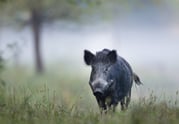
November 7, 2023
Related Articles
March 31, 2023
February 28, 2022
Featured Locations
- Fishing Charters Near Me
- Austin Fishing Guides
- Biloxi Fishing Charters
- Bradenton Fishing Charters
- Cabo San Lucas Fishing Charters
- Cancun Fishing Charters
- Cape Coral Fishing Charters
- Charleston Fishing Charters
- Clearwater Fishing Charters
- Corpus Christi Fishing Charters
- Crystal River Fishing Charters
- Dauphin Island Fishing Charters
- Daytona Beach Fishing Charters
- Destin Fishing Charters
- Fort Lauderdale Fishing Charters
- Fort Myers Fishing Charters
- Fort Walton Beach Fishing Charters
- Galveston Fishing Charters
- Gulf Shores Fishing Charters
- Hatteras Fishing Charters
- Hilton Head Fishing Charters
- Islamorada Fishing Charters
- Jacksonville Fishing Charters
- Jupiter Fishing Charters
- Key Largo Fishing Charters
- Key West Fishing Charters
- Kona Fishing Charters
- Lakeside Marblehead Fishing Charters
- Marathon Fishing Charters
- Marco Island Fishing Charters
- Miami Fishing Charters
- Montauk Fishing Charters
- Morehead City Fishing Charters
- Naples Fishing Charters
- New Orleans Fishing Charters
- New Smyrna Beach Fishing Charters
- Ocean City Fishing Charters
- Orange Beach Fishing Charters
- Panama City Beach Fishing Charters
- Pensacola Fishing Charters
- Pompano Beach Fishing Charters
- Port Aransas Fishing Charters
- Port Orange Fishing Charters
- Rockport Fishing Charters
- San Diego Fishing Charters
- San Juan Fishing Charters
- Sarasota Fishing Charters
- South Padre Island Fishing Charters
- St. Augustine Fishing Charters
- St. Petersburg Fishing Charters
- Tampa Fishing Charters
- Tarpon Springs Fishing Charters
- Venice Fishing Charters
- Virginia Beach Fishing Charters
- West Palm Beach Fishing Charters
- Wilmington Fishing Charters
- Wrightsville Beach Fishing Charters
